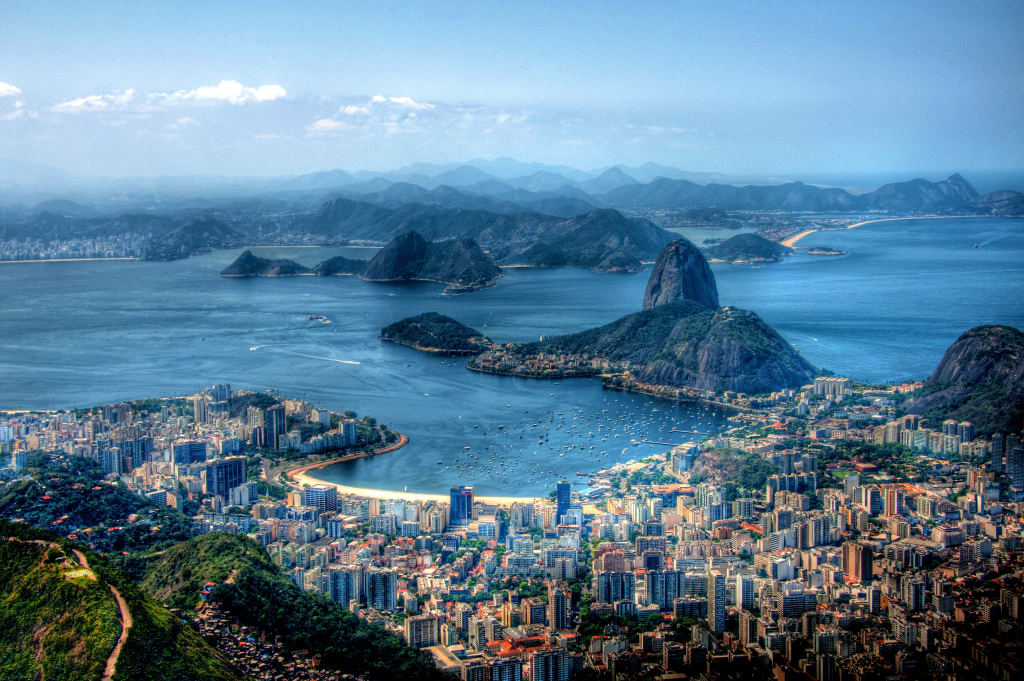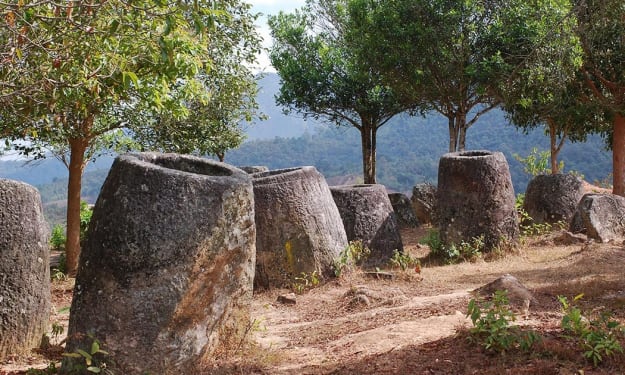"The Guanabara Bay Mystery: Unraveling the Secrets of Brazil's Enigmatic Inlet".
Guanabara Bay mystery.

Introduction:
Nestled along the southeastern coast of Brazil, Guanabara Bay stands as an iconic and mysterious inlet with a history as rich and diverse as the country itself. Home to Rio de Janeiro, one of the world's most famous cities, Guanabara Bay has been a witness to centuries of maritime exploration, colonial conquests, and modern urban development. This article delves into the enigmatic aspects of Guanabara Bay, exploring its ecological wonders, historical significance, and the challenges it faces in the contemporary era.
Geography and Ecological Diversity:
Guanabara Bay is a vast and picturesque bay situated in the state of Rio de Janeiro, surrounded by lush mountains, iconic landmarks, and vibrant urban areas. The bay covers an area of approximately 412 square kilometers (159 square miles) and features an intricate network of islands, bays, and peninsulas.
The bay's diverse ecosystems encompass mangrove forests, sandy beaches, and marine habitats that support a rich variety of flora and fauna. Its unique blend of urban and natural landscapes has earned it a reputation as one of the most beautiful natural harbors in the world.
Historical Significance:
Guanabara Bay has played a pivotal role in Brazil's history, dating back to the era of Portuguese colonization. In 1502, Portuguese explorer Gaspar de Lemos entered the bay and believed it to be the mouth of a river, giving rise to its name, Guanabara, which means "the bosom of the sea." The bay served as a strategic port for the Portuguese during the colonization period and later became the backdrop for the founding of Rio de Janeiro in 1565.
Over the centuries, Guanabara Bay witnessed the ebb and flow of maritime trade, naval battles, and cultural exchange. Its shores bore witness to the arrival of African slaves, European immigrants, and the emergence of Brazil as a melting pot of diverse cultures.
The Mystery of Pollution:
Despite its natural beauty and historical significance, Guanabara Bay is plagued by a modern mystery – pollution. The bay faces significant environmental challenges, primarily due to urbanization, industrialization, and inadequate waste management. Sewage, industrial effluents, and solid waste have led to water contamination and degradation of the bay's ecosystems.
One of the most pressing issues is the presence of plastic waste, which not only poses a threat to marine life but also affects the bay's aesthetic appeal. Efforts to address pollution include clean-up initiatives, waste management projects, and sustainable development programs, but the battle against environmental degradation remains a complex and ongoing challenge.
Cultural and Recreational Hub:
Guanabara Bay is not merely a passive backdrop to history; it actively shapes the cultural identity and recreational activities of the region. The iconic Sugarloaf Mountain and Christ the Redeemer statue overlook the bay, creating a stunning panorama that has become synonymous with Rio de Janeiro. The bay's shores host cultural events, regattas, and celebrations, showcasing its role as a vibrant hub for both locals and tourists.
The neighborhoods surrounding the bay, such as Flamengo and Botafogo, boast a mix of historic architecture, modern amenities, and scenic waterfronts. The bay's numerous islands, including Paquetá and Ilha Fiscal, provide tranquil escapes that stand in stark contrast to the bustling urban life of Rio de Janeiro.
Conservation Efforts and Future Challenges:
Recognizing the ecological importance of Guanabara Bay, conservation initiatives have been implemented to restore and protect its natural habitats. Mangrove restoration projects, water quality monitoring, and community engagement programs aim to address the environmental issues facing the bay.
However, the future presents ongoing challenges, including the need for sustainable urban development, improved waste management, and stricter environmental regulations. Balancing the demands of a growing population with the imperative to preserve Guanabara Bay's ecological integrity remains a complex and dynamic task.
Conclusion:
Guanabara Bay stands as a multi-faceted enigma, intertwining history, culture, and environmental challenges. Its waters have borne witness to centuries of exploration and transformation, reflecting Brazil's diverse and evolving identity. As efforts to address pollution and promote conservation continue, the bay's mysteries unfold, inviting exploration and a renewed commitment to safeguarding its natural and cultural heritage for future generations. Guanabara Bay remains an emblematic symbol of the intricate relationship between humanity and the natural world, highlighting the importance of responsible stewardship and sustainable practices in the face of modern challenges.





Comments (1)
Hello Fatima, AI is permitted on Vocal but it is a Vocal policy that content created with AI is mentioned at the start of the story/article. Your article/story has many telltales of AI-generated content. If you don’t correct this the content may be removed by Vocal and/or you may be banned from the Vocal.